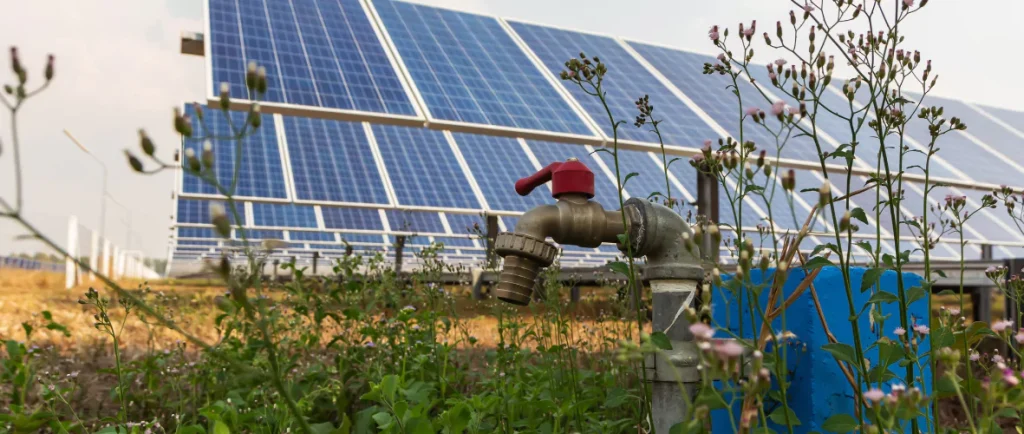Crypto has become a household term in recent years, but its environmental impact while mining is poorly understood, despite rising attention. As digital currencies like Bitcoin and Ethereum gain popularity, so does mining, an energy-intensive operation. So, what exactly is cryptocurrency mining? What effect does it have on the planet? More importantly, what can be done to limit the damage?
Let’s explore these concerns with a full analysis of environmental impact of crypto mining and the recommended solutions to make it more sustainable.
What is Cryptocurrency Mining?
Cryptocurrency mining is the process of verifying and adding transactions to a blockchain, with miners paid by digital coins for their work. This procedure entails solving complicated mathematical problems that necessitate tremendous processing capacity. While mining maintains the integrity of decentralized blockchain networks, it also consumes a significant amount of energy.
For example, Bitcoin mining uses a consensus process known as Proof-of-Work (PoW). Miners compete to solve problems, and the first to do so receives newly minted Bitcoin. What’s the problem? This competition necessitates the operation of thousands of powerful pieces of equipment that consume electricity continuously.
Energy Consumption of Cryptocurrency Mining
Mining Bitcoin or Ethereum is no longer done on a laptop in the garage. We’re talking industrial-scale operations with warehouses filled with specialized mining rigs, such as ASICs (Application-Specific Integrated Circuits), that run continuously. The energy use is astounding.
How Cryptocurrency Mining Consumes Energy
The complicated nature of PoW algorithms means that as more miners join the network, the problems become increasingly harder. More difficulty requires more computational power, which leads to increased energy usage.
Here’s the kicker: according to the University of Cambridge’s Bitcoin Electricity Consumption Index, Bitcoin mining alone consumes more energy each year than whole countries. Bitcoin consumes more energy per year than in countries such as Argentina and the Netherlands. That’s true, one coin consumes more electricity than a nation of millions.
Though Bitcoin is frequently in the spotlight, Ethereum is not far behind in terms of energy use. Until recently, Ethereum also used the PoW mechanism, which resulted in high energy consumption. However, Ethereum has recently switched to a new mechanism known as Proof-of-Stake (PoS), which cuts energy consumption by 99%. This adjustment could have a significant impact on the long-term viability of cryptocurrency mining.
Carbon Footprint and Greenhouse Gas Emissions

Energy use is simply one aspect of the story. Much of the electricity required in Bitcoin mining is generated from nonrenewable sources such as coal, particularly in China (before the mining ban). This has resulted in significant levels of CO₂ emissions, which contribute to the climate problem.
According to a study published in Nature Communications, Bitcoin mining is expected to generate about 22 megatons of CO₂ per year by 2021. To put things in perspective, this is about the same carbon footprint as the entire country of Sri Lanka. Ethereum, before its PoS update, was also responsible for a considerable portion of emissions.
Cryptocurrency Mining vs. Traditional Financial Systems
Some crypto advocates claim that, while mining consumes a lot of energy, the existing financial system isn’t exactly environmentally friendly. Banks, data centers, and ATMs all use energy. However, the difference is in scale. While banks serve billions of people, Bitcoin serves a fraction of them while using more electricity than many entire financial systems.
In 2020, Digiconomist calculated that a single Bitcoin transaction had a carbon footprint comparable to 833,000 Visa transactions. This astonishing figure demonstrates how inefficient PoW-based crypto mining may be in terms of energy consumption and environmental impact.
E-Waste and Hardware Lifespan
Not only does Bitcoin mining consume a lot of electricity, but it also produces a lot of electrical garbage. Mining rigs, particularly ASICs, have a limited lifespan, frequently becoming obsolete within 1.5 years because of technological improvements that render earlier technology ineffective.
When miners replace their equipment, the older rigs frequently end up in landfills, adding to the global e-waste problem. According to Digiconomist, Bitcoin mining alone generates more than 30,000 tons of e-waste every year. This is comparable to the quantity of small IT equipment e-waste generated by countries such as The Netherlands.
The environmental crisis goes beyond landfills. Mining equipment contains hazardous compounds such as lead and cadmium, which can leach into soil and groundwater, causing long-term environmental damage.
Several regions, mainly China and portions of Eastern Europe, have experienced difficulties with e-waste mining. In some regions, poorly dumped hardware has contaminated soils and water sources, posing environmental and public health risks.
Water Usage in Mining Operations
Water may not come to mind when you think of cryptocurrency mining, but it is essential for cooling the powerful equipment that is always in operation. To avoid overheating, data centers that house mining equipment frequently use water-cooled systems.
Local resources may be strained by this excessive reliance on water, particularly in areas where water is already in short supply. Local ecosystems and the availability of water for nearby communities can be greatly impacted by mining operations in rural locations, especially those that use water from rivers or lakes.
For instance, water-intensive cooling systems put more strain on already scarce water supplies in Inner Mongolia, a former Bitcoin mining hub. This resulted in stricter regulations and ultimately a mining ban.
In regions like Iceland, where geothermal energy is used to power Bitcoin mining operations, water usage can still be an issue. While geothermal energy itself is renewable, the massive water consumption required for cooling can lead to localized environmental impacts.
Local Environmental Impacts
Local ecosystems may be harmed by large-scale mining operations, especially in rural or environmentally delicate locations. Deforestation, habitat damage, and increased air and water pollution can result from the building of mining infrastructure.
Sichuan, China, where Bitcoin mining companies once thrived, is a prime example. The flood of mining activities upset local ecosystems in the area, which is noted for its great biodiversity. The natural equilibrium was altered by increased emissions and water usage.
Local communities frequently bear the brunt of mining operations, in addition to the environment. While increased water use might deplete local supplies, affecting agriculture and daily life, increased energy demand can result in higher electricity rates for inhabitants.
Concerns over environmental impact and growing utility prices have prompted communities in some U.S. and Canadian regions to organize against crypto mining operations. Local officials in Plattsburgh, New York, temporarily banned Bitcoin mining because of the impact it had on the town’s electrical grid and the increased expenses for locals.
Mitigation Strategies and Solutions

The good news is that a growing number of mining firms are starting to power their operations with renewable energy sources. With its wealth of hydroelectric and geothermal resources, Iceland is a shining example of how mining may be done sustainably.
Geothermal or hydroelectric energy powers almost all Bitcoin mining activities in Iceland. This has established a standard for other nations to follow by drastically lowering the carbon impact of mining in the area.
Energy efficiency in mining is also being improved by technological developments. The switch from Proof-of-Work (PoW) to Proof-of-Stake (PoS), as demonstrated by Ethereum, is among the most notable changes. By doing away with the necessity for energy-intensive computations, PoS significantly lowers the energy needed for mining.
In Sweden, the government has introduced a framework that encourages cryptocurrency miners to use renewable energy sources by offering lower electricity rates for sustainable operations. This model could serve as a blueprint for other nations.
Best Practices for Sustainable Mining
There are a number of strategies for miners to cut back on their energy usage. Energy-efficient gear, cooler locations to save cooling expenses, or intelligent mining software that modifies power use according to network demand are a few ways to improve your mining setup.
Supporting environmentally friendly cryptocurrencies is an additional method to promote sustainability. Compared to conventional PoW models, more energy-efficient consensus mechanisms like Proof-of-Space or Proof-of-Stake are used by coins like Chia and Cardano.
Businesses in the cryptocurrency space are becoming more and more dedicated to sustainable operations. One significant Bitcoin mining company, Argo Blockchain, for example, has committed to operating entirely on renewable energy to achieve carbon neutrality.
Future Trends and Outlook
Future developments in technology, such as quantum computing and other common ground techniques, may help lessen the negative environmental impact of crypto mining. Innovative methods with low energy consumption are already being tested by projects like Chia and Nano.
We may anticipate stronger laws and incentives for more environmentally friendly mining methods as governments grow more conscious of the effects that cryptocurrencies have on the environment. Nations with abundant renewable energy resources could develop into centers for environmentally friendly mining practices.
Cooperation initiatives like the Crypto Climate Accord, which seeks to achieve carbon neutrality in the crypto sector by 2030, are becoming more popular. These programs are essential for striking a balance between the pressing need to address climate change and the advantages of blockchain technology.
Although mining cryptocurrencies undoubtedly have a big impact on the environment, this impact may be minimized and the sustainability of digital money can be guaranteed with the correct innovations and policies.













